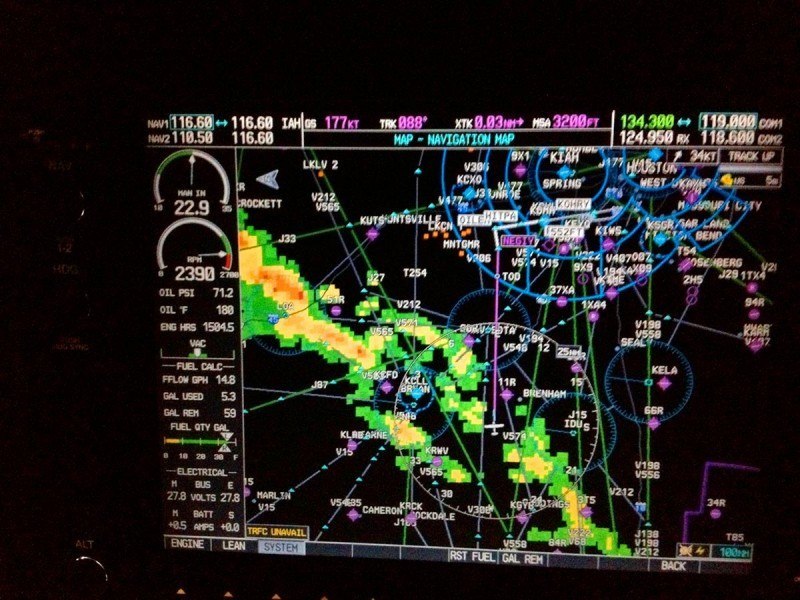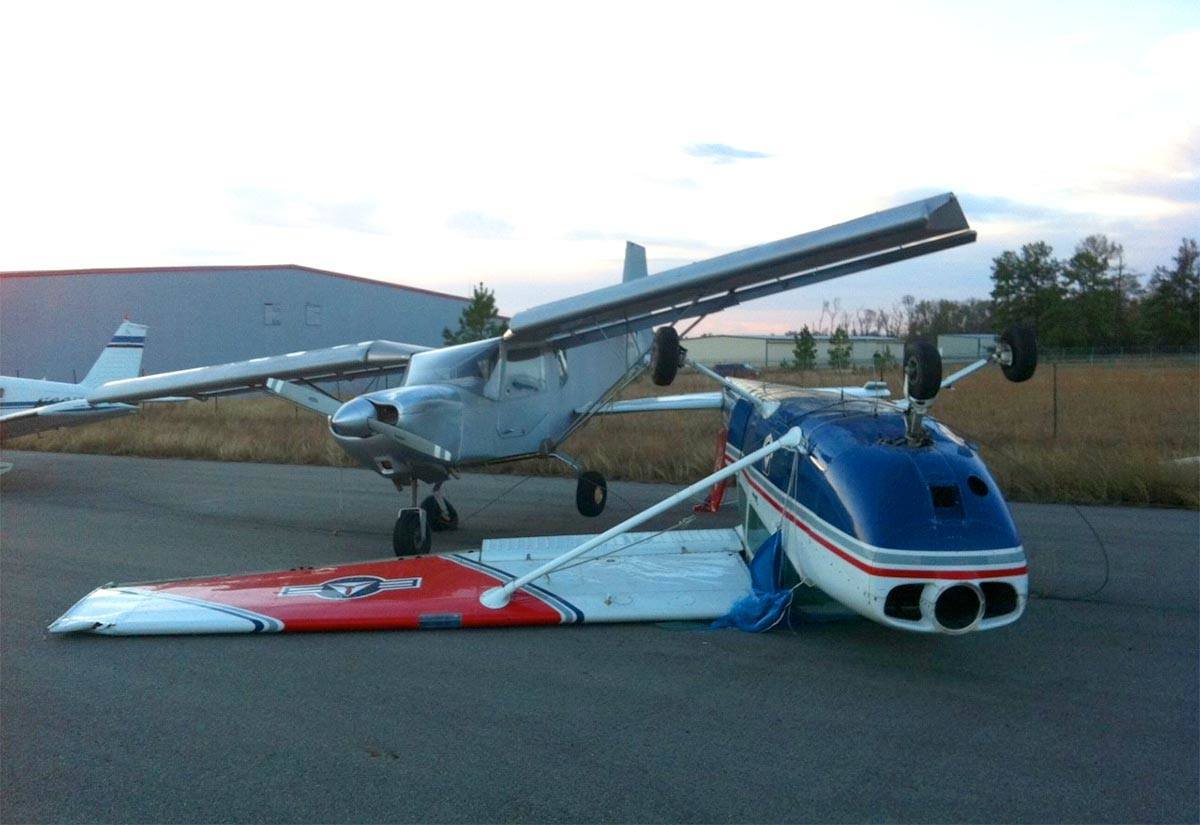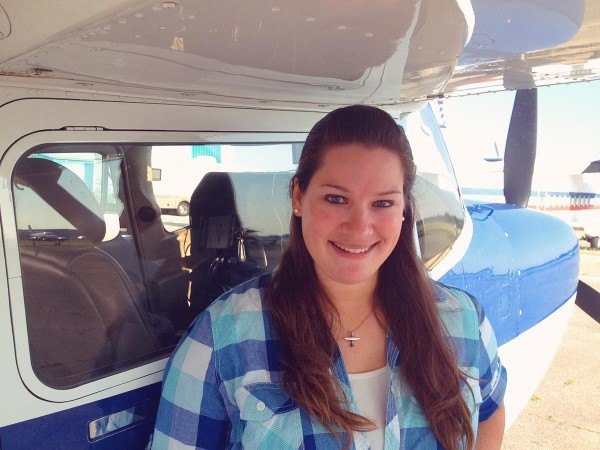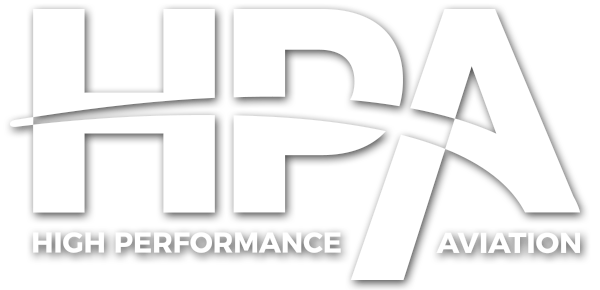High Performance Aviation
Break the Chain
by Sarah Rovner (Commercial Pilot and FAASTeam Representative)
In almost every accident analysis, there is a chain of events that can be followed all the way up to the accident. It is never just one thing, but a combination of bad choices that ultimately lead to the final event. I had convinced myself that these were just the statistics of other peoples’ accidents, and I so blindly led myself down a chain of bad choices that almost certainly could have ended in disaster.
The chain started long before the flight. It was a week before Christmas. I had committed to an Angel Flight after work where I would take the patients from Hooks Airport to Burnet Airport (BMQ). A conference call ran late and I ended up leaving work later than expected and rushed to the airport. The patients were already waiting in the FBO, and I rushed inside to get the paperwork taken care of so we could embark on our journey. I looked up at the TV in the FBO and the weather man was discussing a strong cold front and sandstorm near Waco that was headed our way and would bring cooler temperatures. Based on my weather briefing and pre-flight planning, we would have plenty of time to go and come back before it reached our location. The plane was a Cessna 182T G1000 and had onboard XM weather, so I was confident I would be able to keep track of it.
As I brought the patients out to my car to take them to the hangar, I started digging through my pocket to find the car keys. I checked all my pockets and realized they weren’t there. I excused myself from the group and ran back into the FBO to see where I had dropped them. After searching for a few minutes, I realized I didn’t have them. Upon looking in the car, the key was sitting on the passengers seat and the car was locked. I was in such a hurry that for the first time in my entire life, I had locked my keys in my car. I was half concerned about the appearance I had to the passengers as their professional pilot, and half concerned about the delay and impending weather. I called AAA and it took them an hour and a half to get someone to the airport to unlock my car. It was now dark, and the storms were getting closer.
We took off and had an uneventful IFR flight to Burnet. Unfortunately, we had a 50 kt headwind and I asked approach control for a lower altitude to try to minimize the headwind. We made it to Burnet after a longer than anticipated flight and dropped the passengers off. The 2nd part of my trip was to swing by Georgetown Airport (GTU) and exchange Christmas presents with my best friend who lived nearby. So we hopped over to Georgetown uneventfully and exchanged presents in the FBO. None of us had eaten dinner, so we decided to go grab something. I told the FBO that we would take a top off, and to leave the plane out on the ramp after they close. I wanted to get something quick like fast food, but my friend was complaining about her diet and said we needed to go somewhere healthy. Ironically, we ended up at Dennys, although most could argue that Denny’s is worse than any fast food restaurant in terms of healthy food. The restaurant was very slow and we had to complain multiple times just to get our food. It took over an hour to finally get our food, and we ate and headed back.
When I walked outside the restaurant into the nighttime air, it was instantly cold. The temperature had dropped at least 30 degrees since we went into the restaurant. As we were driving back to Georgetown, I could see there was excessive haze in the sky and low visibility. It wasn’t until I got out of the car at the Georgetown airport that I realized the haze was really sand after getting sand in my teeth. My friend said we could spend the night at her place, but the passenger who came with me said that he couldn’t miss work the next morning or he couldn’t afford to get Christmas presents for his family. I felt like I was backed into a wall, with no right or wrong choice. It was now midnight.
As we walked around the corner, there was a man with a motorized tug in front of the airplane getting ready to load the nose wheel onto the tug. I thought to myself “I told the FBO we were leaving” and headed over to him to see what was going on. I introduced myself to him and asked him what he was doing, and he said that he was the airport manager and had gotten called out in the middle of the night by a concerned resident that an airplane was on the ramp. By this time the winds had picked up, and the sky was lighting up green from power transformers surging in the high winds. I told him to just leave the airplane and we were leaving immediately. He looked at the sky and back to me and told me I was crazy. I said I planned to beat the weather out, although I’m sure I was saying it just to convince myself.
I started up, got my IFR clearance and taxied out toward the runway. As we were taxiing, the wind gusts were so strong that the stall warning horn was constantly going off in the airplane. I lined up with the runway, took a deep breath, and raised the power to full. As we accelerated down the runway, I felt like I was performing a ballet with my feet just to keep the airplane on the 5000ft x 100ft runway. I rotated but the gusts were so strong that every time I gained a little airspeed, it would drop again. I barely made it into the air by the end of the runway, at which point I realized I had held by breath the entire time. Both of us were silent. I knew that going back wasn’t an option, and we were committed to making it back to Houston. I would later find out that wind gusts were up to 70kts in almost every direction that night.

As we headed back, I was looking at the radar and realized it was forming so fast that we couldn’t outrun it to the south. The next best option was finding a way through the front. In our position, we would only have to penetrate about 3 miles of radar returns before being in the clear. We had a 60kt tailwind, and were gaining fast on the front. I knew that the G1000 NEXRAD display was on a delay, and it was a bit hard to see cloud formations at night. Based on the information I had, I picked a spot to go through that was yellow on the radar returns. We could even hear the controller’s concern about going through the front, and he asked several times about how the ride was. As we neared the spot we were going through, it seemed much more calm that normal. Then, out of nowhere, we hit severe turbulence. The autopilot kicked off and everything started beeping. Things were going flying, and I could barely read the numbers on the digital flight display. I pulled the power back but it didn’t help. Things got glued to the ceiling, glued to the ground, and sometime even floating. I was terrified. As soon as we got through it within about 45 seconds, it was perfectly calm again. After the NEXRAD on the G1000 MFD refreshed, I realized that the cell that was yellow right before had turned red. Luckily, there was no damage at all and we made it home uneventfully. When we landed, it was 30 degrees warmer. We put the plane in the hangar and drove home. As we were getting home, the sandstorm rolled through and ended up causing a lot of damage in Houston. However, we had made it home safely.
 Wind damage from the storm at a local airport.
Wind damage from the storm at a local airport.
Here is a link to the local news report about the problematic weather: http://abclocal.go.com/ktrk/story?section=news/local&id=8926645
The lesson learned here is that the entire chain of events could have taken a different path at any one of those points. Being rushed causes carelessness, and perhaps skipping the present exchange with my friend would have avoided having to penetrate the front. I could have spent the night in Austin or rented a car to get home, but I got caught in the heat of the moment. I learned that plans need to be dynamic, and that safety should be the first and foremost consideration. But as much as pilots may think they are impervious to outside influences, everyone has that weak spot where those could affect safety.  Luckily, I came out unharmed but with enough of a scare to never do something like that again. Some people never get that chance to review a bad decision and move on from there. I hope that this experience will be a lesson to those so that they don’t end up making their own story with a very unhappy ending.
Luckily, I came out unharmed but with enough of a scare to never do something like that again. Some people never get that chance to review a bad decision and move on from there. I hope that this experience will be a lesson to those so that they don’t end up making their own story with a very unhappy ending.
Sarah Rovner is a commercial airplane pilot based in Houston, TX who enjoys flying her G1000-equipped Cessna 182 for personal and business travel. She is also active as a mission pilot in the Civil Air Patrol, a humanitarian pilot with Angel Flight, a tow pilot for a local glider field, FAASTeam Representative and EAA Young Eagles pilot. She enjoys flying to and exploring new places, and is currently working toward her CFI rating.
Would you like more information?
Send us a message below.

